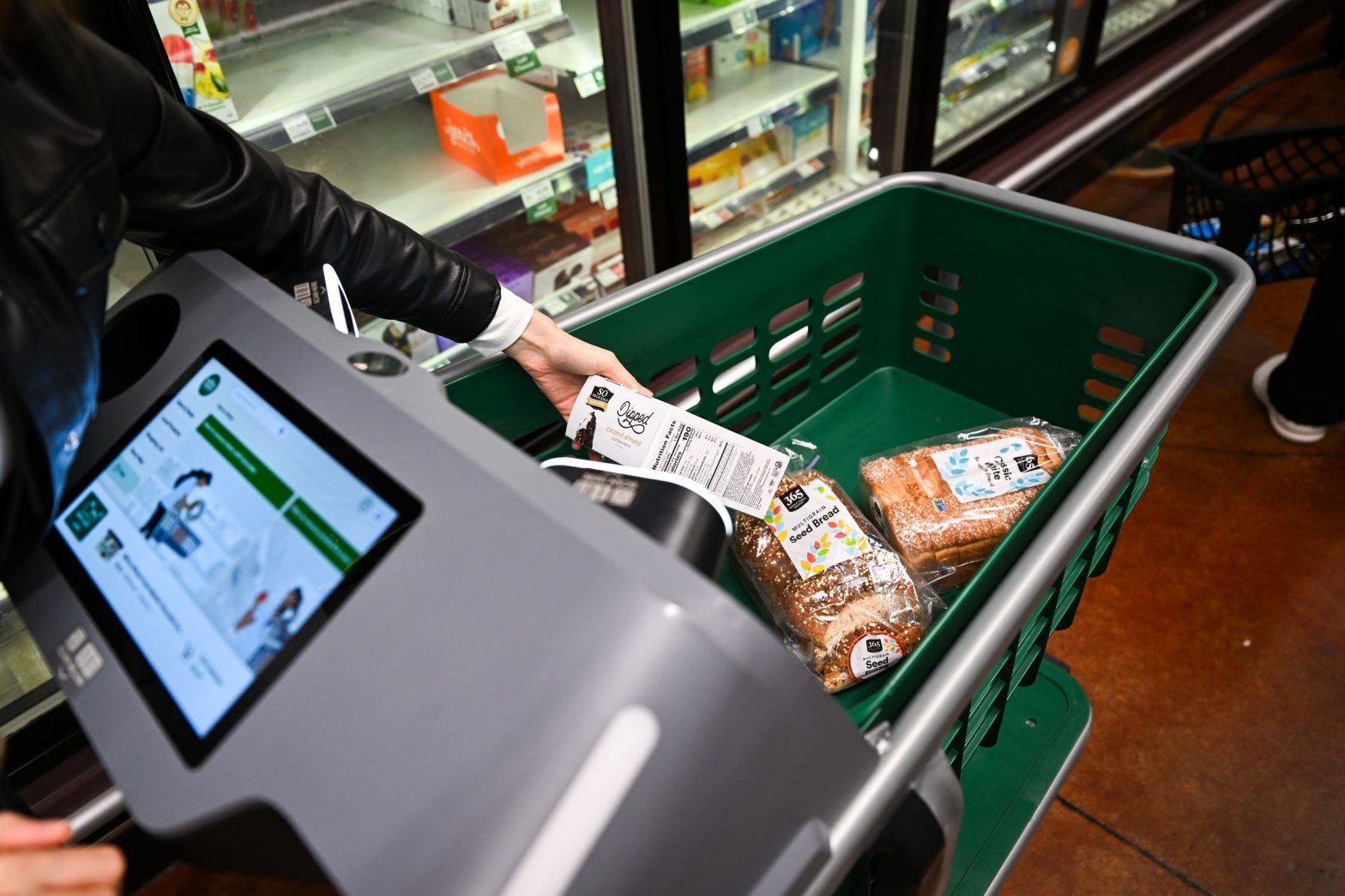/
The company will try letting customers scan while they shop, instead.
Share this story
:format(webp)/cdn.vox-cdn.com/uploads/chorus_asset/file/25367812/2031361646.jpg)
An Amazon Dash Cart in Whole Foods.
Photo by Tayfun Coskun / Anadolu via Getty Images
Amazon has decided to give up on its Just Walk Out program that lets customers leave its brick-and-mortar grocery stores without a formal checkout process. Instead, it’s switching fully to “Dash Carts,” where customers scan products as they toss them in their cart.
That’s according to The Information, which reports that the company is pulling Just Walk Out from all larger stores where the system is in place and “sprucing up the stores across the board” as it prepares to expand Amazon Fresh locations later this year. Amazon will keep using it in smaller corner stores, though.
Amazon hasn’t managed to get a handle on in-person retail despite buying the upscale, popular Whole Foods chain back in 2017. Over the years, the online shopping giant has closed all of its Books, 4-Star, and Pop-up stores and halted the expansion of its Fresh stores. Last year, it shuttered its “Amazon Style” clothing stores. In January, it closed its last drive-up grocery store.
Now, with the company falling back further to Dash Carts, it’s essentially shrinking self-checkout into a contraption with scanners and a touchscreen, bolted onto special shopping carts — something that other retailers have tried in the US and in Europe — followed by checking out with a palm scanner. That has benefits like customers being able to keep a running total while they shop, but Amazon would still face hurdles.
Despite the first self-checkout machines coming into use in the 1980s, the approach has never totally caught on — as a British supermarket chain executive told the BBC last year, the machines can be slow, unreliable, and impersonal. Other grocery store chains like Walmart and Costco have also been rethinking self-checkout.
Even so, the approach is far simpler, probably less error-prone, and almost certainly cheaper than the company’s original approach of using computer vision that watched customers through cameras and sensors to figure out what they’re buying. Amazon said in September that it was scaling that back in favor of using radio-frequency identification, or RFID, scanners to keep track of customer purchases. It’s possible people will be uneasy about the palm-scanning technology it’s using instead, but maybe that’s better than all the cameras and AI.
